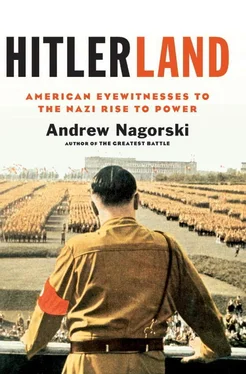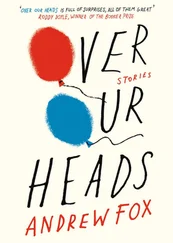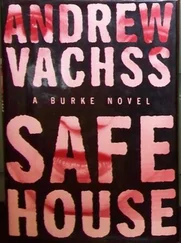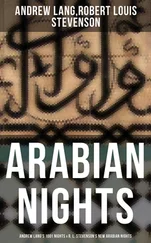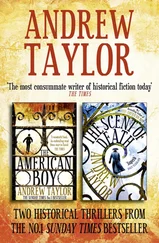Mowrer insisted that the lack of faith in liberal democracy extended even to those who were ostensibly its guardians. “The most remarkable feature of the Liberal German Republicans was the scarcity of Liberal republicans,” he wrote. The Weimar governments had not only tolerated numerous “patriotic” private armies but also used them to suppress left-wing revolts. Hitler’s Sturmabteilung, or SA, the Brownshirts, and his elite Schutzstaffel, or SS units, the Blackshirts, were hardly unique when they were formed in 1921.
Early during their stay in Germany, the Mowrers were returning by a night train from a weekend in East Prussia when they were suddenly awakened by loud shouting. The train had stopped at a small station, and two young men had boarded, turned on the light in the carriage where the Mowrers and other passengers were trying to sleep, and opened the window. From the platform, a middle-aged man wearing a trench coat and narrow leather belt was shouting at them “with the raucous voice of a drill sergeant,” Lilian Mowrer recalled. She got up and turned out the light, but one of the young men brusquely switched it back on, clicked his heels and returned to the window. Edgar put a warning finger to his lips, signaling that it was better not to confront them. He explained to her afterward that the men belonged to “a secret army which the government tolerates but does not recognize.”
But by the end of the 1920s, it was Hitler’s political power—admittedly, backed by his not-so-secret armies—that was on the rise. When the economic crisis started to hit hard, the Nazis benefited immediately. In the September 1930 parliamentary elections, they won 107 of 577 seats, a spectacular jump from the 12 seats they had won two years earlier. Of the 35 million Germans who had gone to the polls, nearly 6.5 million had voted for Hitler’s party, making it suddenly the second-largest party in the Reichstag after the Social Democrats. In 1928, only 800,000 Germans had cast their ballots for the Nazis. Hitler, it appeared, had good reason to put his faith in “legal methods” of seizing power, as he had indicated to Wiegand. The Hearst correspondent’s nose for news was working well when he had decided it was time to interview him again.
For Americans living in Germany, the growing strength of the Nazis was hard to miss. Berkeley exchange student Enid Keyes arrived in Berlin in the fall of 1931, with a fellowship to study at the University of Berlin. On October 30, she accompanied Lars Mehnert, the younger son of her German hosts, to a Nazi rally in a big indoor sport stadium. She was fascinated by the policemen lined up outside in case trouble erupted, and by the scene she encountered inside. “The seats swarmed with people, old and young, all loyal to Hitler and the National Socialist program,” she wrote her mother back in California. Noting how quickly the Nazis had risen from obscurity to become the largest opposition group, she added that girls passed around red cans “to collect money for the poor, or the imprisoned Nazi people. And people were generous with their pennies.”
What impressed Keyes the most was the atmosphere of the rally. “The noise, the spontaneous cheers, the band, reminded me of a football game crowd,” she wrote. “But the feeling here was deeper, more firmly rooted, and much more significant than a Saturday afternoon football throng. Heart and soul, Germans are concerned with the political destiny of their country. It was stirring to see the vast crowd rise as one man, when the trumpets announced the entrance of the Hitler flags, and the various divisions marched to their place on the platform.” The crowd greeted the Brownshirts with the Nazi salute and “the roof was nearly raised by the Nazi song, a hymn with a catchy tune.” While Keyes didn’t understand much of the speeches, she needed no translation to feel the fervor of the crowd. She wrote her mother that “young Lars” came home decked out with Nazi pins and flags. “Like all the youth of Germany, he is an ardent party member,” she concluded.
The rise of the Nazis wasn’t simply something Americans observed; it also began having a direct impact on their lives. Edgar Mowrer recounted the story of a thirteen-year-old American boy, whom he only identified as Arthur. The boy was attending a Jesuit school in Berlin, and one day in the winter of 1931 he posed a question to his father: “Dad, what do you think of National-Socialism?”
“I don’t think about it,” the father replied evasively, since he knew he was treading on dangerous ground. “National-Socialism is purely a German matter which does not concern you or me.”
But Arthur didn’t give up. A few days later, he asked his question a different way. “Dad, if you were a German, would you be a National-Socialist?”
The father asked what was prompting his questions. “You see, nearly all my friends are National-Socialists,” Arthur explained. “I like to be with them, and if you aren’t one, there are so many interesting things you are shut out of.”
Worried, the father told Arthur that the Catholic bishops had condemned the Nazis. “How can Catholic boys be members of a forbidden organization?”
“I don’t know, Dad,” Arthur continued. “But they are, and if you aren’t a National-Socialist in this school, you aren’t anybody. Do you think as a foreigner I could become one?”
Mowrer reported that Arthur never followed through on that wish. But by 1932, about half of the students in his class openly supported Hitler’s party. Despite efforts by the Jesuits to stop the politicization of their classrooms, even the boys’ rough games reflected the larger battles swirling around them. One of the most popular was “chariot bumping.” Pretending to ride chariots like in the 1925 silent movie Ben-Hur , the boys crashed into each other. At first, the opposing forces in those contests were labeled “Romans” and “Jews.” Then, the labels switched to “Centrists” and “Nazis” and the confrontations became nastier, with boys clearly seeking to hurt their opponents.
In their dispatches, American correspondents were often reluctant to make outright predictions on how far the growing backing for the Nazis could carry Hitler. But in their private exchanges with their editors, they were more willing to be blunt about the connection between the deteriorating economic conditions and its impact on politics. Writing on December 28, 1931, to C. M. Morrison, the editor of the Philadelphia Public Ledger, Knickerbocker painted a bleak picture of the country he was covering. He had just traveled all over Germany for a series of articles he was writing. “I never saw before with my own eyes the degree and extent of real poverty now prevalent here,” he reported. Those conditions, he warned, could lead to another disaster.
Correspondents like Knickerbocker and Mowrer also enjoyed occasional lighter moments even during economically desperate times. The two American reporters were walking down Friedrichstrasse one day when they stopped two streetwalkers. Knickerbocker introduced himself and asked what the women thought of the latest government changes that represented a major setback for the Social Democrats as more conservative politicians took power.
“We are for the new gentlemen,” one of the women responded.
Taken aback, Knickerbocker and Mowrer asked why.
“These damn socialists with their free love have made it almost impossible for an honest whore to earn a decent living,” she said. “The gentlemen will change all that and give us a chance!”
As Mowrer sardonically noted, he and Knickerbocker filed stories on this revealing conversation, but his editors at the Chicago Daily News found it “too hot to publish.”
For the most part, though, what Americans in Germany saw of the lives of ordinary Germans was far from amusing. Enid Keyes, the Berkeley exchange student, wrote home on November 17, 1931, about the “sad side” of life in Berlin: “I can’t ever walk a block without seeing blind men, old women with galoshes stuffed with newspapers for shoes, cripples, white-haired ex-soldiers who are begging or selling matches or shoe strings. Old people with gnarled hands and round shoulders, faces blue with the cold, creep along looking for work, picking up twigs in the threadbare park, or searching the gutters for paper.” The following month she noted that people were looking even more discouraged, and beggars “have increased on the streets in terrible numbers.” Women approached passersby pleading that they were hungry and had children “who are crying for food,” she added.
Читать дальше
